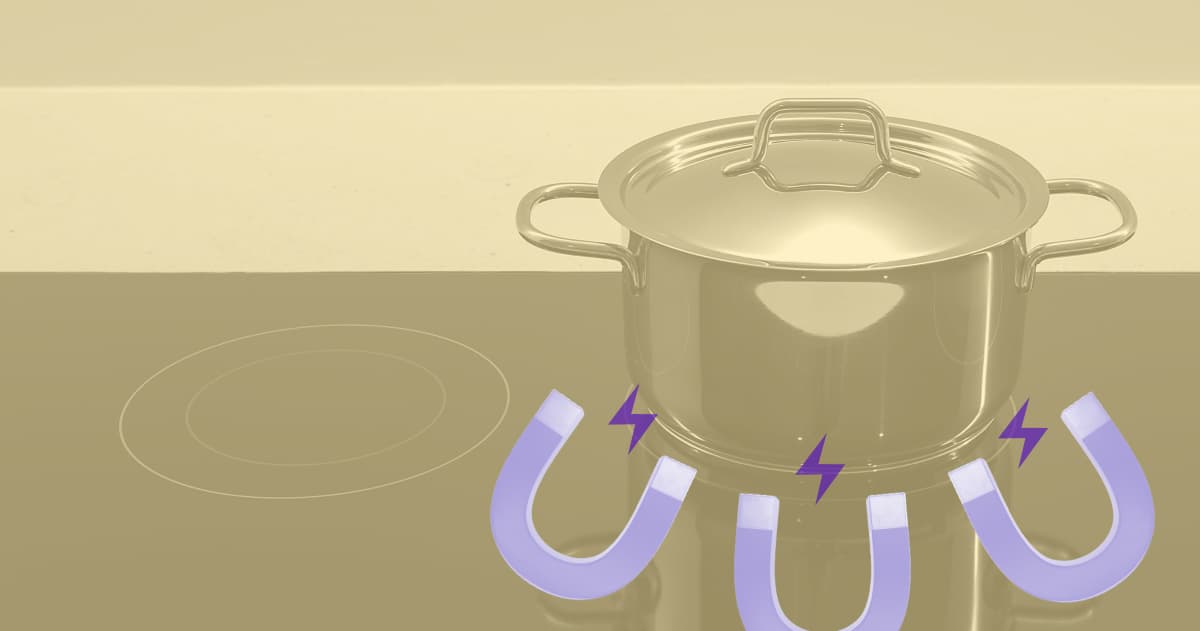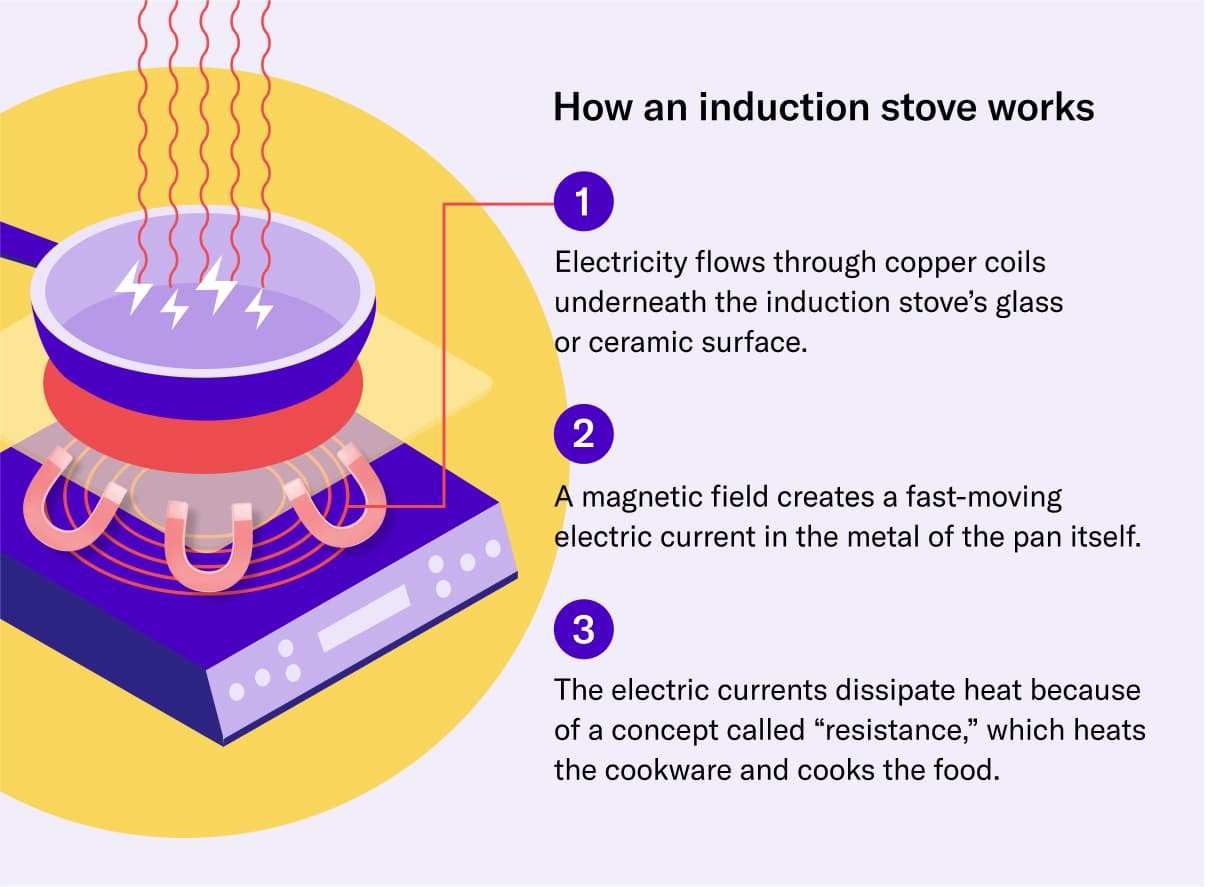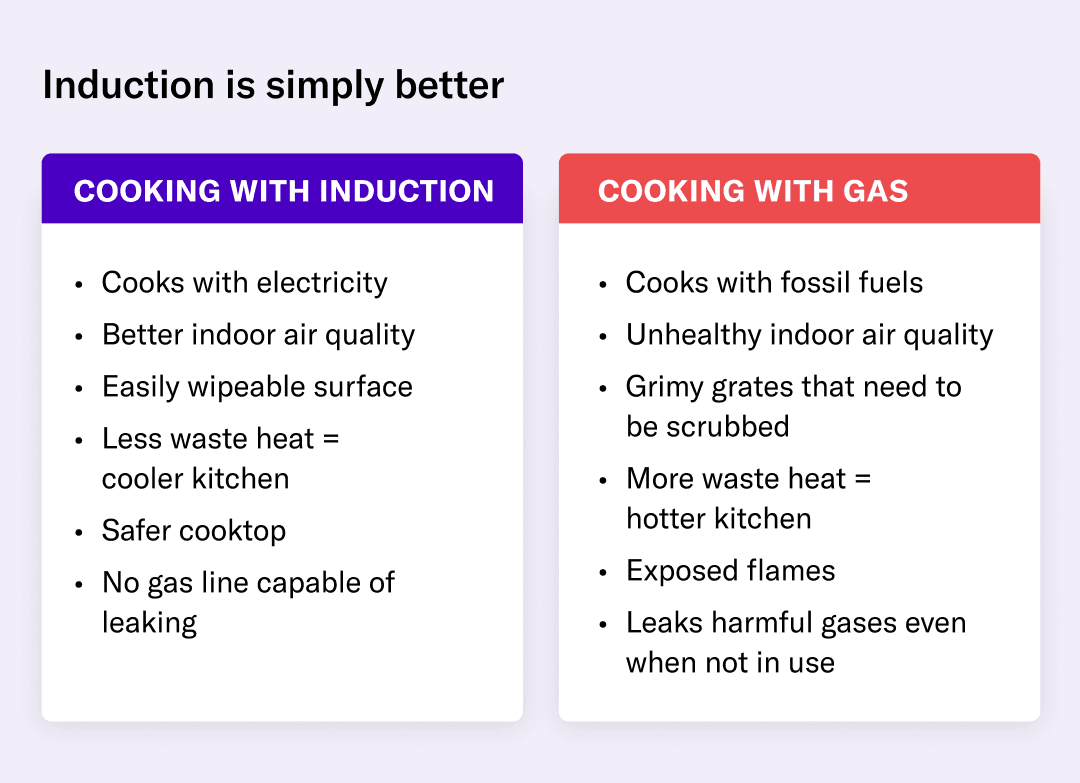How induction stoves work
A mighty machine for all your cooking needs

In a recent Consumer Reports survey, almost 70 percent of participants said they would consider an induction stove. Call it the rise of the mighty magnet machine — a cooktop that more and more households are switching to superfast pan-heating, quick-frying and water-boiling capabilities. So how do these fantastic machines smoke the competition? First, it’s all about the power of electromagnets.
Currents gonna current

An induction stove powers an electromagnet, powered by electricity, to create a magnetic field. That magnetic field generates a fast-moving current (called an eddy current) inside the metals in your cookware — like a skillet, frying pan, or cast iron pan. This fast-moving current runs into resistance in your pan and generates the heat that cooks your food or boils your water.
Eddy currents are the not-so-secret science behind induction stoves. They are similar to the circular, swirling currents in a stream or the ocean. But instead of moving water, they move the electrons inside your pans to create cooking heat. Think of fast-moving electrons vibrating and bouncing around — that dance party is what generates the heat to cook your food.
Electric? Yes, and…
Induction cooking does use electricity, but it’s not “electric,” the way most people describe the stove their grandma had. Here’s the difference. Electric stoves send electricity into a resistive coil. Heat moves from the resistive coils to the surface (or exposed coils) of the stove. That heat radiates indirectly to the stove’s surface, the pan, and your food.
Induction stoves are much simpler. Heat is induced directly in the pan and the pan heats up. The upside? Less heat is lost and your food cooks way faster.
You know the intense heat you feel when you put your hand over a gas stove while you’re cooking? That’s all lost heat that’s not helping you get dinner on the table. Heat loss is inevitable when transferring energy, but induction stoves are engineered to drastically reduce the amount of wasted heat.
Efficiency, the name of the game
Less heat loss means more efficiency. And induction stoves are the most efficient stoves you can buy. Energy efficiency is measured by how effective the stove converts energy to cooking heat. Induction stoves have 90 percent energy efficiency versus 74 percent for electric and 40 percent for gas. That efficiency also means far less heat is radiated out from your stove and into your kitchen. The best part? No more hot kitchens in the summer. An induction stove combined with your ultra-efficient heat pump on cooling mode will help you beat the heat in every way inside your comfy home.
No gas, no problem
What’s most impressive about this efficient machine is that it can boil water faster and cook food more consistently without burning gas inside your home. Buying an induction stove is not just better for cooking — it’s better for your health and keeps pollutants out of the air.
Gas stoves burn fossil fuels just inches away from you and mere feet away from anyone you live with. In a poorly-ventilated space, gas stoves release carbon monoxide, nitrogen dioxide, and other pollutants and carcinogens directly into your home. These pollutants can cause detrimental health outcomes — especially in children and older adults — such as triggering asthma attacks, decreasing overall lung function, and increasing chances of serious respiratory illness. A recent study showed that 12.7 percent of childhood asthma in the U.S. is attributable to gas stove use.

Research shows that children in homes with gas stoves are 42 percent more likely to experience asthma symptoms than children in homes with electric stoves.
Induction is simply better. And you and your family deserve it. Ditching a gas stove for an induction stove is the best choice to protect your family’s health.
Get your pots and pans ready
Induction cooking works through magnetism. If a magnet doesn’t stick to the bottom of your pot or pan, it’s not likely to work with an induction cooktop. But the good news is you probably have pans that work because most new cookware is induction-ready. Cast iron, some kinds of steel, Dutch ovens (which are cast iron enameled with glass), and some higher-end non-stick pans are perfect for induction cooking. Regardless of your cooking style or favorite dishes, you’ll have a variety of options to choose from.
A powerful step towards an electrified home
Now that you know how induction stoves work and why they are better (and healthier) than gas, get ready to make the switch! Upgrading to an induction stove is the perfect way to start electrifying your home. Available later this year or early next year, electrification rebates can save you up to $840 on the upfront cost of an induction stove. Visit Rewiring America’s IRA calculator to learn more about your personalized savings.
Once you kick fossil fuels out of your kitchen, you’ll never go back. But you don’t have to take our word for it, watch this video to hear homeowners share their experience.
Induction stoves are the best way to cook food, keep pollutants out of the air, and keep your family healthy. Electrify your home with Rewiring America's free electric cooking guide. Check it out.
First, a gas-free stove. Then an all-electric home?
We’ve launched a free tool to help you go all-electric. Make your plan. Maximize your savings. Get help along the way.
Start planning today